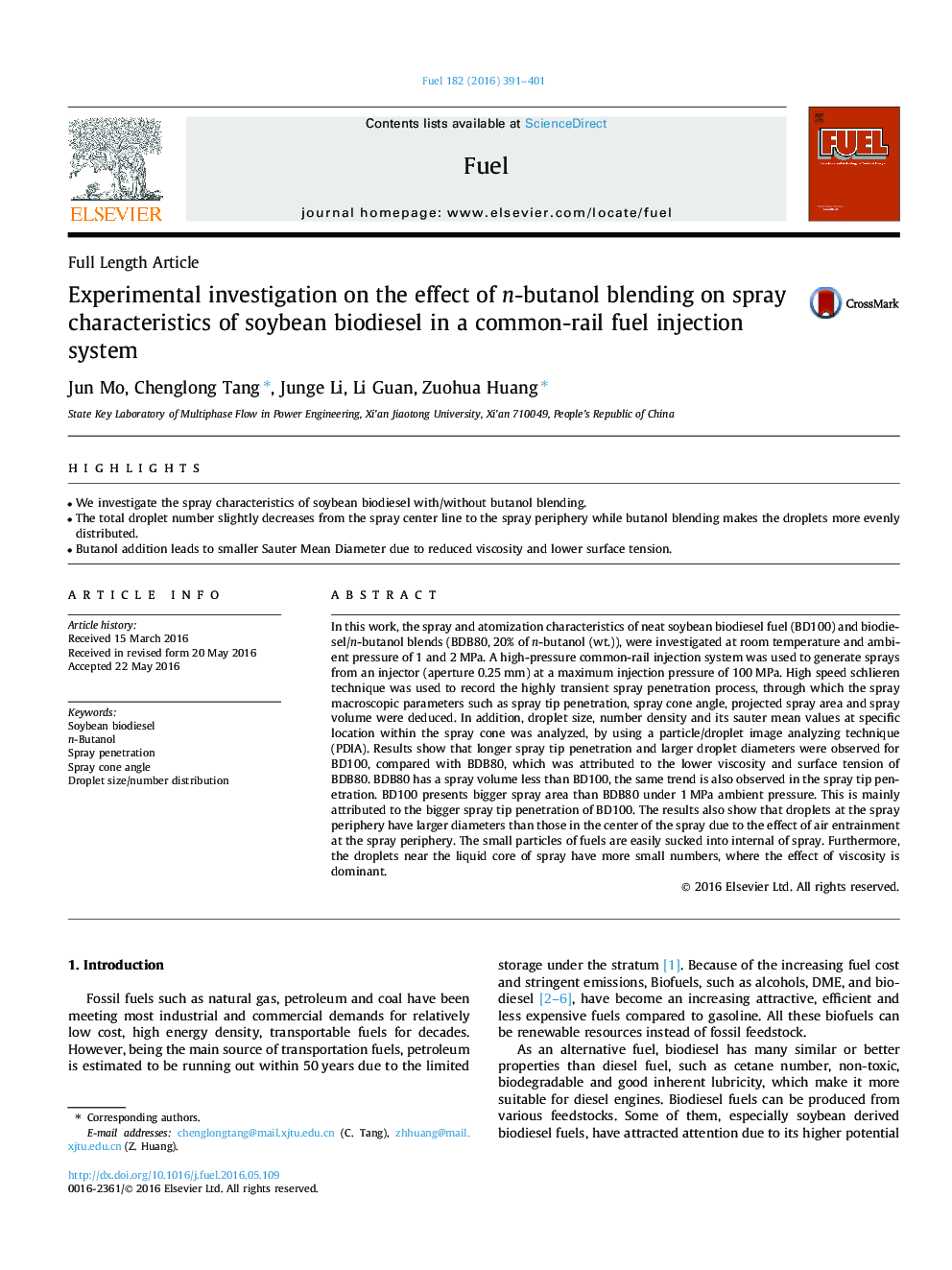| Article ID | Journal | Published Year | Pages | File Type |
|---|---|---|---|---|
| 6633459 | Fuel | 2016 | 11 Pages |
Abstract
In this work, the spray and atomization characteristics of neat soybean biodiesel fuel (BD100) and biodiesel/n-butanol blends (BDB80, 20% of n-butanol (wt.)), were investigated at room temperature and ambient pressure of 1 and 2Â MPa. A high-pressure common-rail injection system was used to generate sprays from an injector (aperture 0.25Â mm) at a maximum injection pressure of 100Â MPa. High speed schlieren technique was used to record the highly transient spray penetration process, through which the spray macroscopic parameters such as spray tip penetration, spray cone angle, projected spray area and spray volume were deduced. In addition, droplet size, number density and its sauter mean values at specific location within the spray cone was analyzed, by using a particle/droplet image analyzing technique (PDIA). Results show that longer spray tip penetration and larger droplet diameters were observed for BD100, compared with BDB80, which was attributed to the lower viscosity and surface tension of BDB80. BDB80 has a spray volume less than BD100, the same trend is also observed in the spray tip penetration. BD100 presents bigger spray area than BDB80 under 1Â MPa ambient pressure. This is mainly attributed to the bigger spray tip penetration of BD100. The results also show that droplets at the spray periphery have larger diameters than those in the center of the spray due to the effect of air entrainment at the spray periphery. The small particles of fuels are easily sucked into internal of spray. Furthermore, the droplets near the liquid core of spray have more small numbers, where the effect of viscosity is dominant.
Related Topics
Physical Sciences and Engineering
Chemical Engineering
Chemical Engineering (General)
Authors
Jun Mo, Chenglong Tang, Junge Li, Li Guan, Zuohua Huang,
